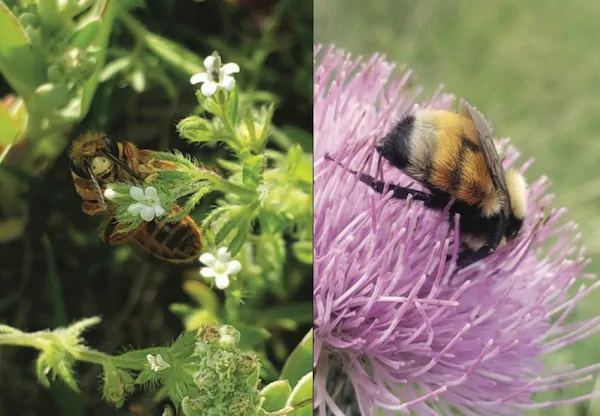Flowers tend to be a go to gift for Mother’s Day, a traditional way to tell the moms in your life that you think they are a wondrous beauty in all senses of the word. Even small children can arrive with a bundle of dandelions to show mom they care. But have you ever stopped to consider that there is a friendly neighbourhood mother who might be responsible for the blooms that frequent our gardens and vases at this time of year? There are 28 adorable bumble bee species in our province that help pollinate local flowers, and Spring is an excellent time to look for the new queens.
As the new queen bees of the previous year emerge from their solitary winter hideouts they are immediately on the search for a suitable nesting site. They carry the weight of the colony literally and figuratively as they were fertilized in the fall and are the only members of their colony to survive the winter cold. If you see a bumble bee with a low flying zig zag pattern this may just bee a queen looking for a place to set up a home. They prefer areas with little disturbance and protection from the weather. This could bee an abandoned burrow or mouse den, a bee box, or any other dry dark cavity that they think will fill the needs of their future family.
The fuzzy nature of the bumble bee allows it to bee out earlier than several other pollinators, and allows the flowers to spread more pollen as more of their pollen gets trapped in this fuzz. Having early blooming plants in your yard, native flowers, or leaving dandelions alone, can help ensure they get the important food they need at this time of year to help them establish their colonies. Once they have burrowed into whatever soft nesting material they have found in the den, the mothers-to-bee will create a wax cup which they fill with nectar they collect from flowers. At the same time, they are making a lump of pollen which they eventually lay their first eggs into. They sit on this pollen lump sipping from their nectar cups if the weather is bad warming their eggs by vibrating their muscles. These eggs then hatch into larvae and start feeding on the pollen lump. The queen must maintain the heat of the den, while also foraging for pollen and nectar to bring back to her hungry babies, an amazing feat for any single mother.
If the bumblebee queen successfully rears her first eggs to adults then these females will help raise the rest of the colony throughout the summer, eventually including the males and new queens. This ensures the bumble bees can return to pollinate more flowers the following year. However, this arduous task of raising a bumble bee colony is becoming increasingly difficult due to habitat changes and other factors. If you would like to find more information on how you can help these young mothers succeed in your yard, how to build a bee box, or participate in some citizen science please check out www.albertanativebeecouncil.ca
Photo by Laura Griffin


























